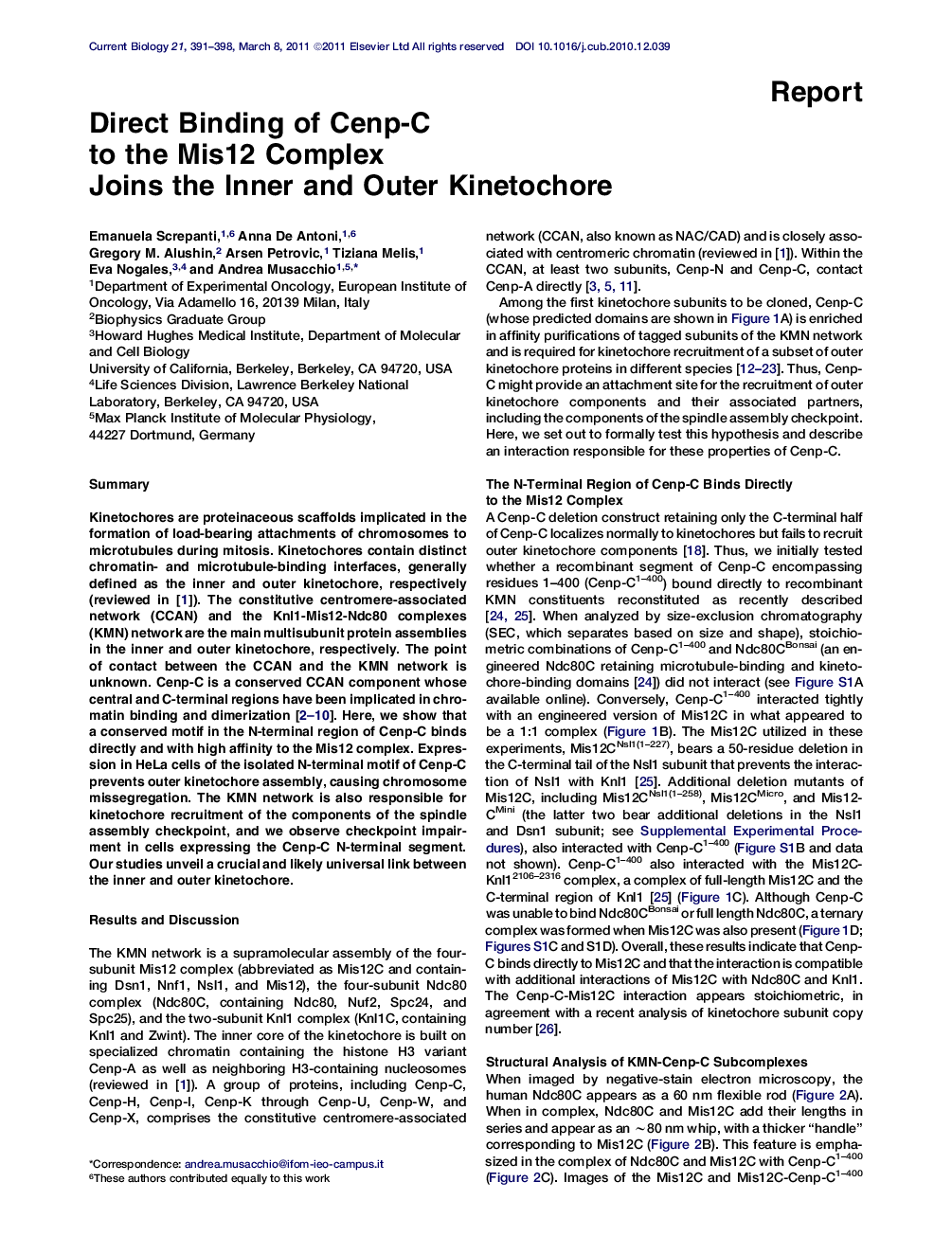| Article ID | Journal | Published Year | Pages | File Type |
|---|---|---|---|---|
| 2043213 | Current Biology | 2011 | 8 Pages |
SummaryKinetochores are proteinaceous scaffolds implicated in the formation of load-bearing attachments of chromosomes to microtubules during mitosis. Kinetochores contain distinct chromatin- and microtubule-binding interfaces, generally defined as the inner and outer kinetochore, respectively (reviewed in [1]). The constitutive centromere-associated network (CCAN) and the Knl1-Mis12-Ndc80 complexes (KMN) network are the main multisubunit protein assemblies in the inner and outer kinetochore, respectively. The point of contact between the CCAN and the KMN network is unknown. Cenp-C is a conserved CCAN component whose central and C-terminal regions have been implicated in chromatin binding and dimerization [2, 3, 4, 5, 6, 7, 8, 9 and 10]. Here, we show that a conserved motif in the N-terminal region of Cenp-C binds directly and with high affinity to the Mis12 complex. Expression in HeLa cells of the isolated N-terminal motif of Cenp-C prevents outer kinetochore assembly, causing chromosome missegregation. The KMN network is also responsible for kinetochore recruitment of the components of the spindle assembly checkpoint, and we observe checkpoint impairment in cells expressing the Cenp-C N-terminal segment. Our studies unveil a crucial and likely universal link between the inner and outer kinetochore.
► An N-terminal motif of Cenp-C binds with high affinity to the Mis12 complex ► Ectopic expression of N-terminal motif C prevents outer kinetochore assembly ► A universal linker between inner and outer kinetochore is identified
